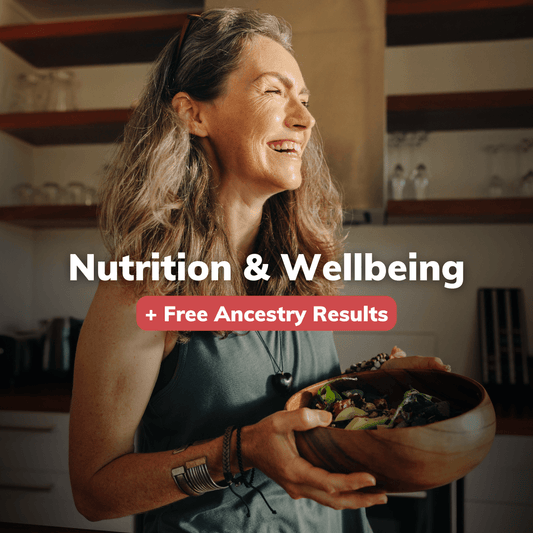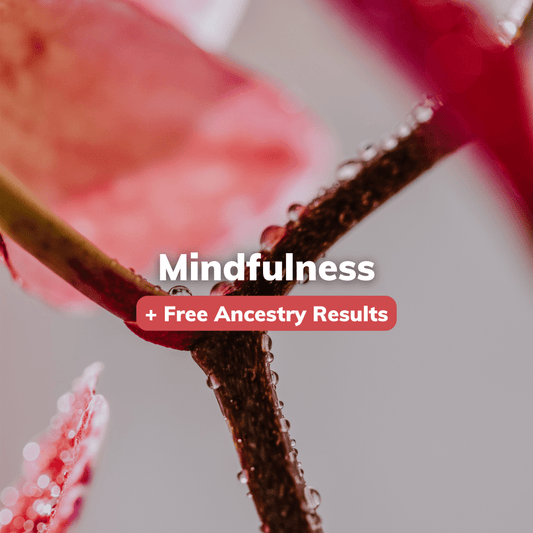
The Sum of All Your Genes
BioCertica Content TeamWritten by: Jamie Fernandez, Content Specialist, B.Sc. in Genetics
Picture this, you are sitting in your doctor’s office and in front of you are those wonderful, never-ending forms you have to fill out. You get the question that asks, “What is the history of disease in your family?” and you start to wonder, “How much is relevant? Should I add that my cousin, twice removed, had gall stones last year?”
Well the medical history of your immediate blood relatives is going to be much more useful to your doctor than a distant cousin. However, adding that both your grandmother and father suffered from cancer will likely prompt your doctor to do some cancer screening tests. Why? Well, this likely means that you have a genetic predisposition to cancer.
I am sure you’ve heard the term “genetic predisposition,” and understand its broad definition:“you have a latent susceptibility to developing a disease or a trait” but we can break it down a bit more than that.
So let us begin with where your DNA comes from. You have 46 chromosomes, 23 came from your mother and 23 came from your father. And where did your parents get their DNA? Well their parents of course. So does this mean that you are one quarter of each of your grandparents? The maths on this makes sense but in reality, the answer is “no, you can have a very varying percentage of each of your ancestor’s DNA.” The reason for this is a very interesting evolutionary mechanism called “recombination” that occurs in meiosis, the cell division that makes sperm and egg cells (cells that have 23 chromosomes). During recombination, sections of a maternal chromosome can be swapped with a paternal chromosome and therefore each resulting egg or sperm cell has a unique genetic makeup. This also explains why siblings (with the exception of identical twins) are all genetically different [1]. Therefore, if your grandmother had cancer, you may have inherited that gene or you may not have.

Figure 1: A simplistic illustration of meiosis.
However, when we discuss genetic predisposition we have to consider the disease or trait in question. Let’s look at the BRAC1 gene which gained a lot of public awareness in 2013 due to the op-ed written by actress Angelina Jolie in The New York Times. Due to carrying a specific mutation in the BRCA1 gene, Jolie had an 87% chance of developing breast cancer and a 50% chance of developing ovarian cancer. This high genetic predisposition led Jolie to decide to undergo a preventative double mastectomy [2]. BRACA1 and BRAC2 mutations account for roughly 30% of hereditary breast cancer and other genes that may increase risk of developing breast cancer include TP53, PTEN, SKT-11, CDH1 and PALB2. However, only 5-10% of breast cancer cases are hereditary. In other words when it comes to developing breast cancer, few cases are determined by a genetic predisposition [3].
From this example, we see that developing breast cancer is not always dependent on a genetic predisposition. This brings up the age-old debate, nature vs nurture. How much of who you are is attributed to your genes and how much is attributed to your environment? In genetics, we have a simple term for this, heritability. Heritability is defined as the proportion of variation in a trait or disease that is due to genetic factors. A high heritability means that a great amount of the variation in that trait is because of genetic factors and has less influence from environmental factors. On the other hand, a low heritability estimate means that environmental factors have a much greater impact on the variation in the trait than genetic variation. Early-onset Alzheimer’s disease has a heritability of over 90%[4], this means that the disease is very much determined by genetics and having a high genetic predisposition would mean that you are very likely to develop the disease. On the other hand, if you have no genetic predisposition to early-onset Alzheimer’s disease, you have a very slim chance of developing the disease. However, some traits have a much lower heritability, as is the case of major depressive disorder, which has a heritability of about 40% [5]. In this case, an environment and lifestyle that does not support the onset of major depressive disorder could counteract a genetic predisposition.
As you may have read already, we at BioCertica use a genetic testing method called Polygenic Risk Scoring (PRS) [read about it here]. The results generated from PRS gives you, your genetic predisposition or relative risk of that trait but, this is only one piece of the puzzle. Your actual risk of developing the trait or disease (the absolute risk) is the combination of your relative risk and other factors such as lifestyle. How much your relative risk contributes to your absolute risk depends on the heritability of the trait or disease. You may not be able to change your relative risk, but you can change your absolute risk by changing your lifestyle.

Figure 2: Application of PRS testing through BioCertica.
References
[1] T. Strachan and A. Read, Human Molecular Genetics, Fifth. CRC Press Taylor & Francis Group, 2019.
[2] “Opinion | My Medical Choice by Angelina Jolie - The New York Times.” [Online]. Available: https://www.nytimes.com/2013/05/14/opinion/my-medical-choice.html. [Accessed: 14-Jul-2022].
[3] P. Economopoulou, G. Dimitriadis, and A. Psyrri, “Beyond BRCA: New hereditary breast cancer susceptibility genes,” Cancer Treat. Rev., vol. 41, no. 1, pp. 1–8, Jan. 2015.
[4] R. Sims, M. Hill, and J. Williams, “The multiplex model of the genetics of Alzheimer’s disease,” Nat. Neurosci. 2020 233, vol. 23, no. 3, pp. 311–322, Feb. 2020.
[5] E. C. Corfield, Y. Yang, N. G. Martin, and D. R. Nyholt, “A continuum of genetic liability for minor and major depression,” Transl. Psychiatry 2017 75, vol. 7, no. 5, pp. e1131–e1131, May 2017.



